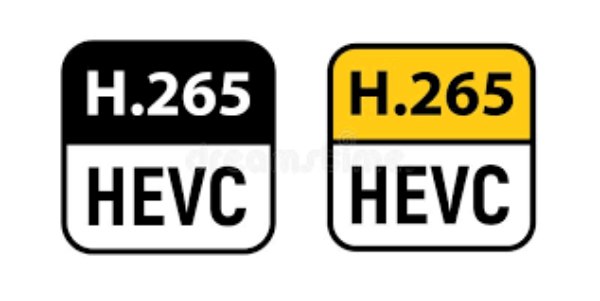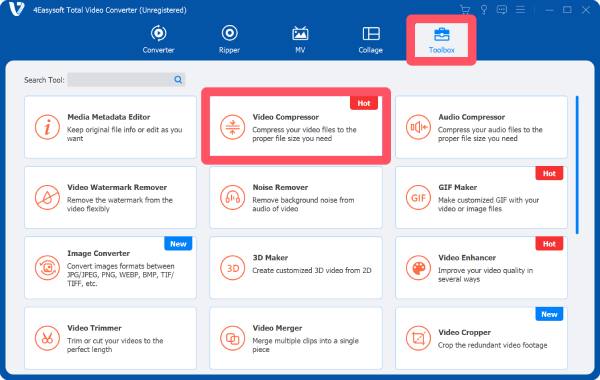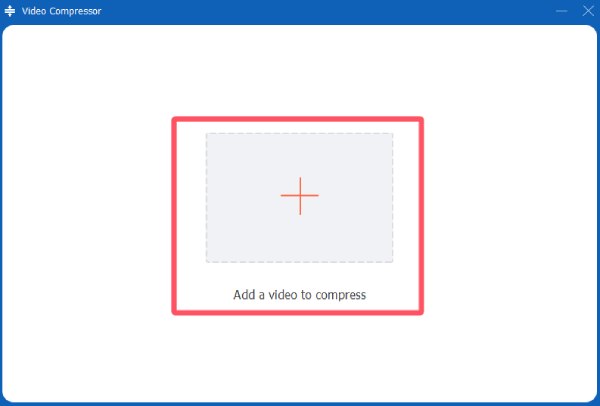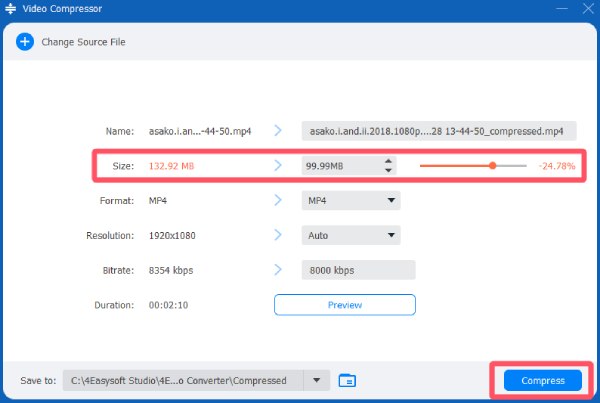Convert, edit, and compress videos/audios in 1000+ formats with high quality.
Discover the Best Video Formats for Efficient Compression
What is the best video format for compression? Since compressing high-quality videos to save space for saving or uploading is so important, many people want to find a balance between video quality and file size. In this guide, you’ll discover the most efficient video formats for compression and how to use them without sacrificing quality. Plus, the bonus part will show you an easy way to compress videos into different formats for any purpose.
Guide List
The Best Video Formats to Consider for Efficient Compression [Bonus] How to Compress Video Files to Various Video FormatsThe Best Video Formats to Consider for Efficient Compression
When choosing the best video format for compression, it’s important to consider both efficiency and compatibility. Some formats offer smaller file sizes with minimal quality loss, while others prioritize playback support across devices. Below are five commonly used video formats that strike a balance between compression power and usability.
1. MP4 (H.264)
MP4 is one of the most commonly used video formats for both compression and compatibility. It uses the H.264 codec, which delivers high-quality video at relatively low bitrates. This format is widely supported across platforms, including browsers, mobile devices, and editing software.

MP4 strikes a great balance between file size and video clarity, making it ideal for streaming, uploading, and sharing. Whether you're compressing videos for YouTube, social media, or internal use, MP4 is a top choice due to its versatility and efficiency.
2. HEVC/H.265
HEVC, also known as H.265, is the successor to H.264 and offers even better compression efficiency. It can reduce file sizes by up to 50% compared to MP4 while maintaining the same visual quality. This makes it ideal for 4K or high-resolution video compression.

However, HEVC has limited compatibility with older devices and software. It's more suitable when storage space or bandwidth is a concern and the playback environment supports the format. HEVC is perfect for archiving videos or distributing high-quality content with reduced file sizes.
3. WebM
WebM is an open-source video format designed for web use. It typically uses the VP8 or VP9 codec, which offers comparable compression to H.264 and H.265. WebM files are smaller in size and optimized for fast loading in web browsers like Chrome and Firefox.

While not as universally compatible as MP4, WebM is great choice when it comes to compressing videos for emails. It’s a solid choice if you’re looking to deliver compressed video content directly through websites without relying on proprietary formats.
4. MKV
MKV is a flexible container format that supports multiple video, audio, subtitle, and metadata streams in a single file. While it isn’t inherently more compressed than MP4 or WebM, MKV supports advanced codecs like H.265, allowing for efficient video compression than MOV compression.” /]
It’s widely used for storing high-quality videos, especially in the open-source and home theater communities. Though not as compatible as MP4 with all devices, MKV is excellent for archiving compressed video with rich media content, including alternate audio tracks and subtitles.
5. AVI
AVI is an older format developed by Microsoft that can still be used for compressed video when paired with modern codecs like Xvid. Xvid compresses video data efficiently while preserving good quality. However, AVI files are generally larger than those compressed with H.264 or HEVC.

The format lacks support for advanced features like soft subtitles or multiple audio streams. It's best used in controlled environments where compatibility with legacy systems is important. While not the most efficient for compression, AVI with Xvid can be a viable option in specific scenarios.
[Bonus] How to Compress Video Files to Various Video Formats
If you’re looking for an easy and reliable way to compress videos into various formats, 4Easysoft Total Video Converter is the perfect solution. For considering the best video formats for compression, this beginner-friendly tool supports a wide range of output formats like MP4, AVI, MKV, and more, allowing you to convert and compress high-quality videos without losing much visual fidelity.

Whether you’re preparing files for email, uploading to social media, or saving storage space, it lets you reduce video file size in just a few clicks. Plus, with its intuitive interface, batch processing, and real-time preview, compressing videos to the best format becomes fast and stress-free.

Support almost all the best video formats for compression.
Compress multiple video formats at once to save time.
Compress video while maintaining high picture quality.
Provide a user-friendly interface with high-quality output.
100% Secure
100% Secure
Step 1Launch 4Easysoft Total Video Converter and click the "Toolbox" button. Click the "Video Compressor" button.

Step 2Click the "Add Files" button to import your video files for compression.

Step 3After adjusting video file size under the "Size" tab, click the "Compress" button.

Conclusion
Choosing the best video format for compression is essential when you want to maintain quality while reducing file size. Formats like MP4, AVI, MKV, and WebM all offer different benefits depending on your specific needs. For an even easier experience, 4Easysoft Total Video Converter help you compress and convert videos effortlessly to the format that suits you best.
100% Secure
100% Secure



